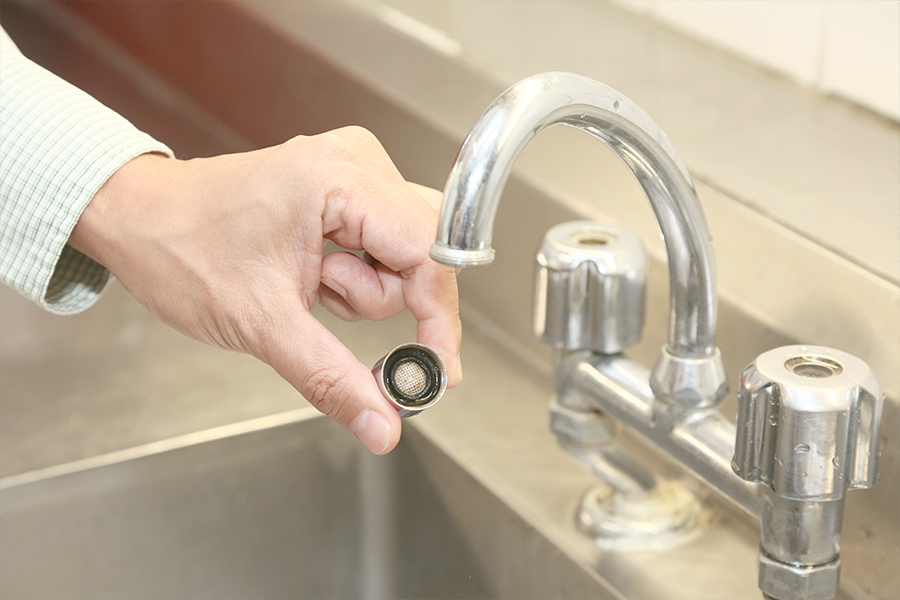Fully implementation of Drinking Water Safety Plan (DWSP)
The HA develops a series of routine water safety checklists for the DWSP, including minimising stagnation and dead leg, keeping water tank access hatches locked, cleaning water tanks and infrequently used water taps regularly and controlling water supply temperatures.
Proper maintenance of water supply systems

Regular cleaning, disinfecting or replacement of strainers (photo) in water taps should be carried out at least once a year in high-risk areas#, and once every two years at non-high-risk areas. Moreover, large-capacity container for cooled drinking water storage is not recommended in clinical areas as it is difficult to clean and disinfect the container after each use.
# Including bone marrow transplant units, solid organ transplant wards, haematology/oncology wards, adult Intensive Care Units, haemodialysis centres, and receiving wards for patients with post head-and-neck surgery.
Installation of thermostatic mixing valves (TMVs), pipe sections and gate valves
The hot water storage device should be designed to operate at 60˚C or above, and the water temperature should be kept at least 50˚C/55˚C before flowing to TMVs. Thus, TMVs have to be installed near the final warm water outlets. Installing pipe sections and gate valves at water pipework during opportunistic renovation of existing hospital wards or new hospital projects, enables zonal disinfection when necessary, minimising the impact on overall hospital operations.
Pilot use of UV water disinfection system
As a pilot programme in Pamela Youde Nethersole Eastern Hospital (PYNEH), six high-risk wards of PYNEH are being installed with UV water disinfection system. The principle is to destroy the DNA of bacteria and viruses through the high-energy wavelength of UVC so that they cannot continue to proliferate, thereby reducing the total bacterial count in water.
Pilot use of passive cooling paint to lower temperature of surface of potable water tanks
The optimum temperature for proliferation of the
Legionella bacteria is around 20˚C to 45˚C, and particularly in the range of 35˚C to 43˚C. PYNEH is the pilot site to apply passive radiative cooling paint on roof-top of potable water tanks, which is expected to reduce surface temperature thereat by 4˚C to 5˚C even under hot weather.
 Regular cleaning, disinfecting or replacement of strainers (photo) in water taps should be carried out at least once a year in high-risk areas#, and once every two years at non-high-risk areas. Moreover, large-capacity container for cooled drinking water storage is not recommended in clinical areas as it is difficult to clean and disinfect the container after each use.
Regular cleaning, disinfecting or replacement of strainers (photo) in water taps should be carried out at least once a year in high-risk areas#, and once every two years at non-high-risk areas. Moreover, large-capacity container for cooled drinking water storage is not recommended in clinical areas as it is difficult to clean and disinfect the container after each use.